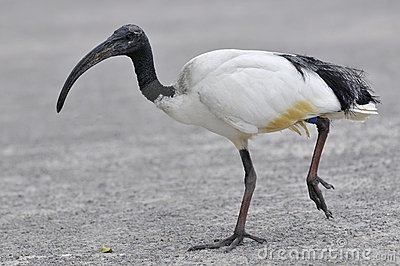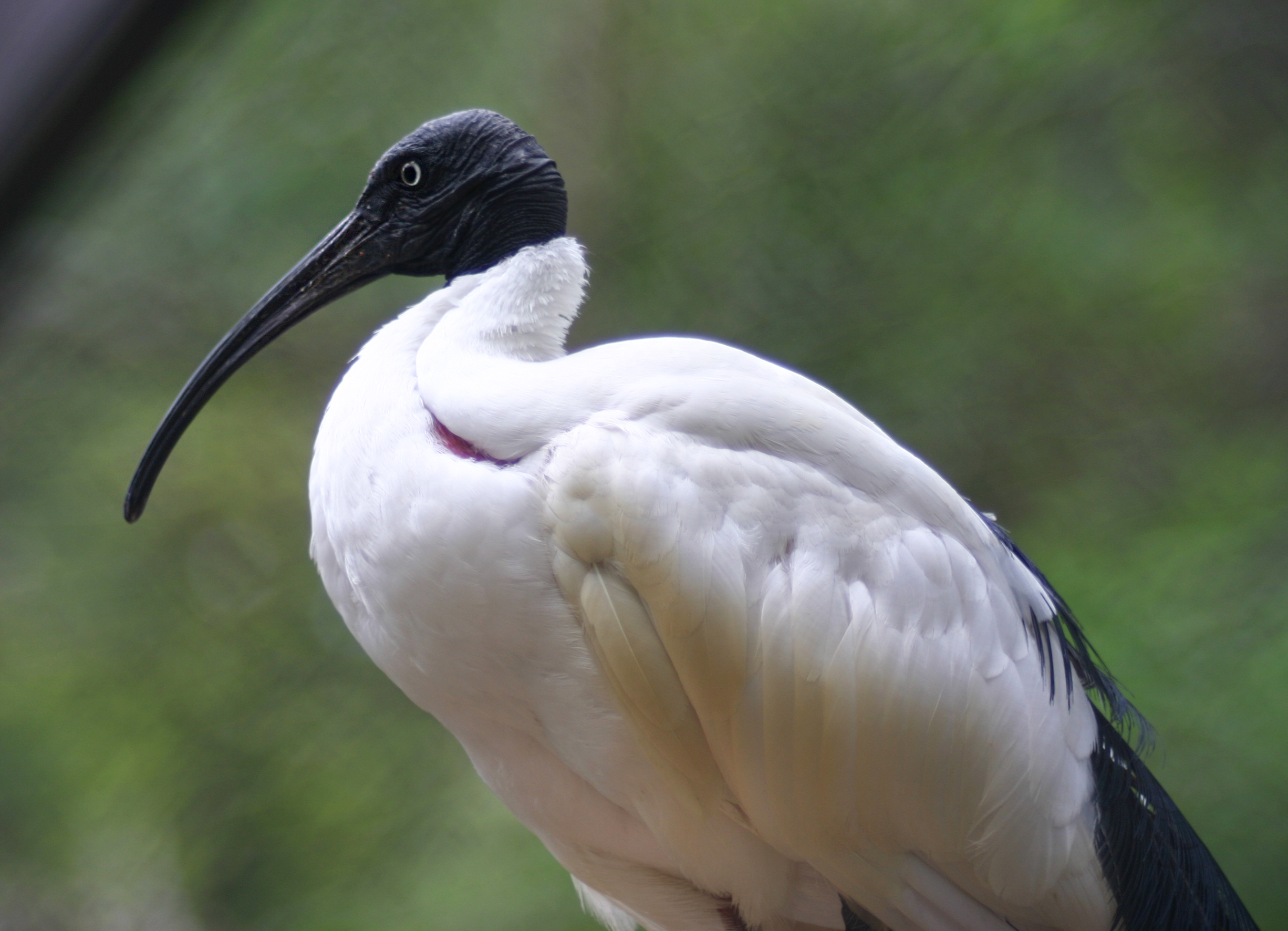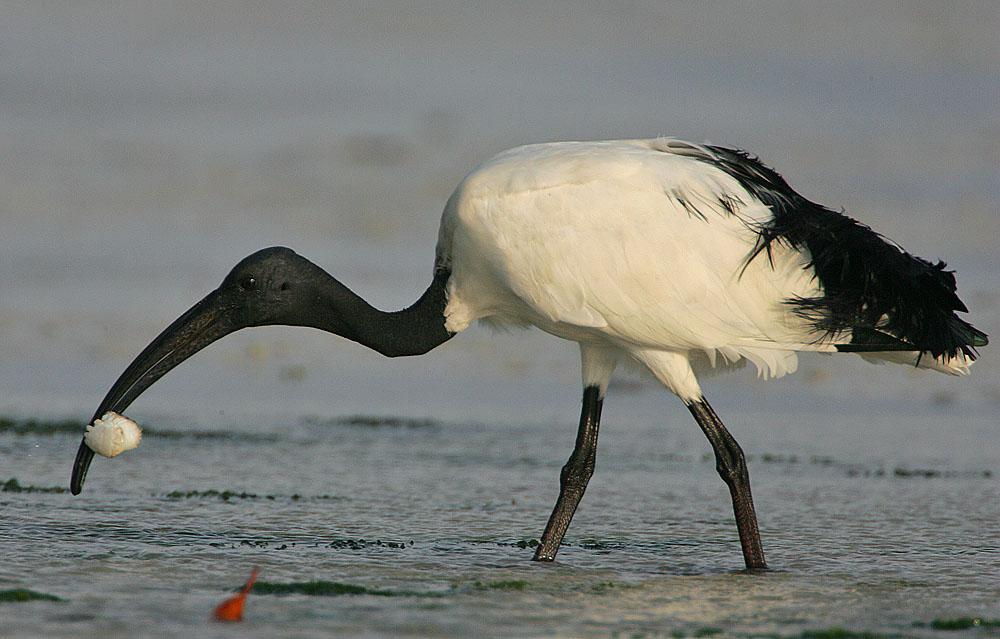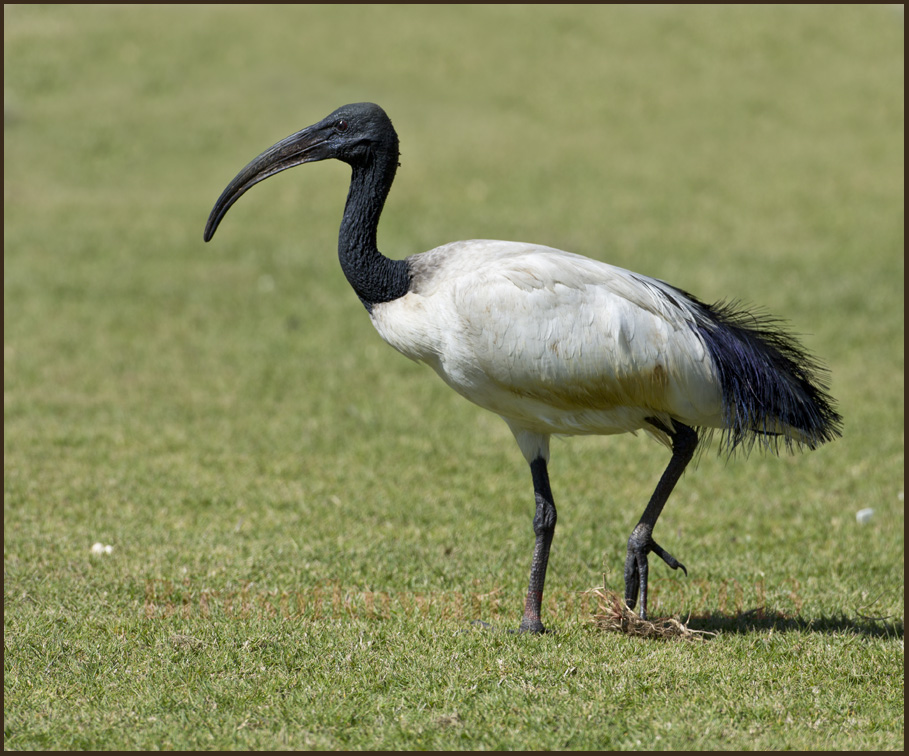
Threskiornis aethiopicus
SUBFAMILY
Threskiornithinae
TAXONOMY
Tantalus aethiopicus Latham, 1790, Egypt. Three subspecies.
OTHER COMMON NAMES
French: Ibis sacrй; German: Heiliger ibis; Spanish: Ibis Sagrado.
PHYSICAL CHARACTERISTICS
25.5–35 in (65–90 cm); 3.3 lbs (1,500 g). Plumage is mostly
white; primary and secondary wing feathers tipped in black.
Head and neck are bare, skin is black. Legs are black. Thickest
bill of its genus.
DISTRIBUTION
Lives in most of the African continent south of 15° North latitude.
There is an isolated colony at the southern tip of Iraq.
Apparently the bird once was common in Egypt but it has not
bred there since the first half of the nineteenth century.
HABITAT
Mainly coastal lagoons, marshes, damp lowlands, and agricultural
areas (when flooded), but sometimes will travel far from
water. Also garbage dumps and recently burned areas.
BEHAVIOR
These birds commonly fly in staggered lines, with each bird
slightly ahead and to one side of the bird behind. A relatively
quiet bird, the sacred ibis will make grunting and croaking
noises during the breeding season, but these are the only vocalizations.
Juveniles lack the long bill of the adults, and eat
by reaching their bills into the parents’ throats and removing
food.
FEEDING ECOLOGY AND DIET
The sacred ibis is specialized by nature for aquatic prey like
small fish and invertebrates, but is an opportunistic eater that
will take anything available, such as carrion, bird eggs and
nestlings, or small mammals.
REPRODUCTIVE BIOLOGY
The nest is a platform made of sticks and twigs, lined with
vegetation. Clutch size is usually three to four eggs, from
which the young hatch after 21 days and are fledged in five to
six weeks. Their downy plumage is dark.
CONSERVATION STATUS
While its range has decreased, the species is not in imminent
danger. Not threatened.
SIGNIFICANCE TO HUMANS
Thoth, the ibis-headed god of wisdom, is shown in many murals
and sculptures, such as in the temple of Sethos, where it
hands the hieroglyph of life to Osiris. It was used as a hieroglyphic
symbol, and entire “cemeteries” of ibis mummies have
been found at Sakkara near Cairo and at Hermopolis in middle
Egypt.
Photo Gallery of - Sacred ibis




 Animalia Life
Animalia Life